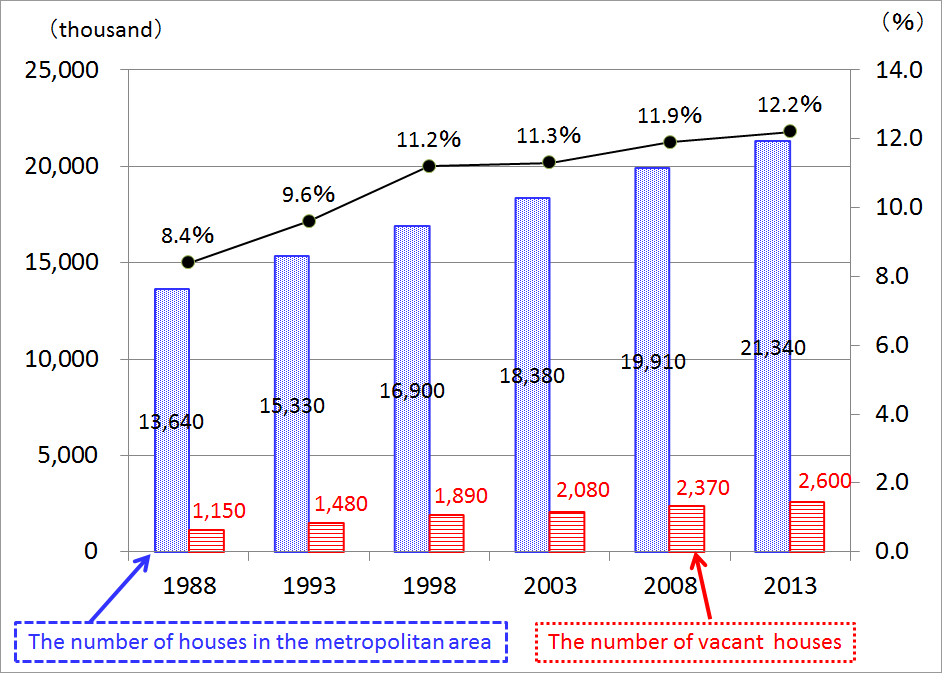Column Finance and the Social Security System 2018.06.21
【Aging, safety net and fiscal crisis in Japan】No.134: The Number of Vacant Houses is Rapidly Increasing
The government determines the number of houses including vacant houses by conducting housing and land statistics surveys every five years. The latest survey was in 2013 and, according to this survey, the total number of houses in Japan is 60,630,000, and the number of vacant houses is 8,200,000. In other words, the nationwide average vacancy rate as of 2013 is 13.5%, which is a 2% increase from 1998. Vacant houses are increasing due to the declining population, and the vacant house rate is higher for prefectures in rural areas. Vacant houses where the elderly died are worthless if the houses are old. Additionally, the demolition cost is also substantial, so it is difficult for an heir to sell their home; thus, these houses tend to be left unattended.
In the White Paper on the Metropolitan Area released in June 2018, the Ministry of Land, Infrastructure, Transport and Tourism warned that the number of vacant houses is increasing even in metropolitan areas. These areas encompass Tokyo and the surrounding prefectures of Saitama, Chiba, Kanagawa, Ibaraki, Tochigi, Gunma, and Yamanashi. The total population of Japan is 127,095,000 as of 2015. Of this, the metropolitan population is 43,830,000 (including 13,515,000 in Tokyo), which accounts for 34.5% of the national sum.
As shown in Figure 1, in the metropolitan area, the number of houses increased from 13,640,000 in 1988 to 21,340,000 in 2013. The number of vacant houses also risen from 1,150,000 to 2,600,000 in the same period. Thus, the vacancy rate has increased from 8.4% to 12.2%.
A long-term vacant house is defined as a house where nobody has lived for three months or more despite having no purpose, such as being a vacation house, lease or selling. From the viewpoint of public agency, a major problem is that the number of long-term vacant houses has increased. Of 2,600,000 vacant houses in the metropolitan area, 740,000 are long-term vacant houses. In areas where long-term vacant houses are increasing, not only are private sector services withdrawn but, also, the cost of public services and infrastructure development has increased, and the efficiency of the entire social system has declined.
Figure 1: The number of houses and vacant houses in the metropolitan area

Source: Ministry of Land, Infrastructure, Transport, and Tourism
